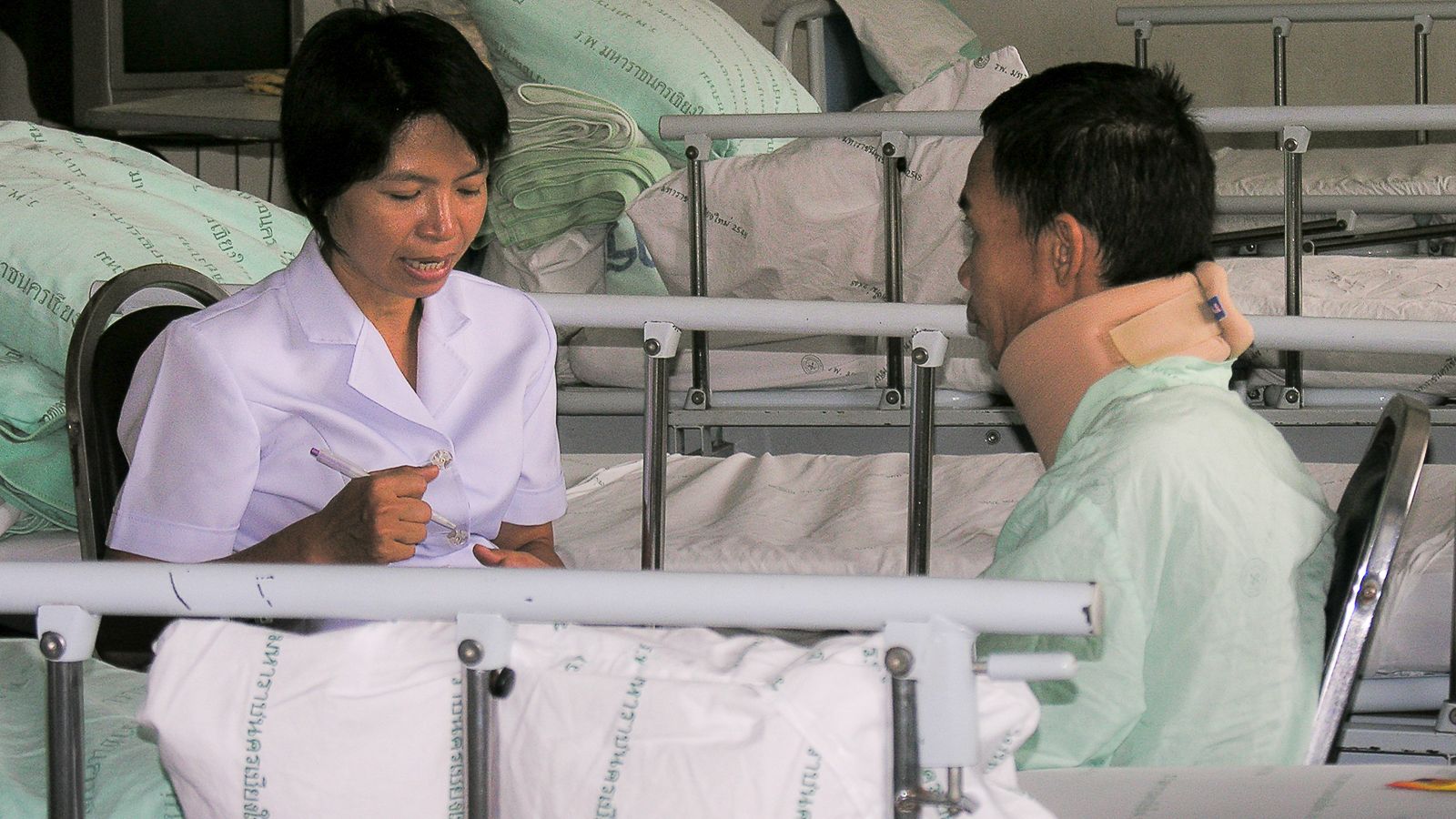Goal-setting/Determination of Intervention Targets

Mr. Dee's Functioning and Rehabilitation Goals At-a-Glance
In creating Mr. Dee's ICF Categorical Profile, selected ICF categories were rated using ICF qualifiers. To help compare his functioning at the initial assessment and at a later time point, ICF qualifiers were also used to indicate the goal value i.e. the ICF qualifier that was intended to be reached after the intervention phase.
On Mr. Dee's ICF Categorical Profile the long-term and short-term goals that he and his rehabilitation team set for this six-week Rehab-Cycle® were listed. Mr. Dee and his rehabilitation team defined as an overall long-term goal or so-called global goal ‘economic self-sufficiency’. As a more immediate service-program goal to be achieved in this particular Rehab-Cycle® they mutually decided on ‘independence in daily living’. As a “stepping stone” toward reaching the service-program goal, three short-term cycle goals were also set:
- Prevention of secondary complications – to ensure his overall health
- Independence in mobility – to address his limitations in walking and transferring
- Independence in self-care – to address the limitations in washing himself and taking care of basic needs like eating and drinking
Although Mr. Dee experienced no secondary complications at the time of the assessment, the rehabilitation team felt that setting cycle goal 1 ‘prevention of secondary complications’ was necessary. Since people with spinal cord injury (SCI) are at high risk for developing secondary complications, such as pressure ulcers and urinary tract infections,8 Mr. Dee's rehabilitation team aimed to prevent these as best as possible during rehabilitation. Thus the goal value “0” or no problem was set.
""...people with spinal cord injury (SCI) are at high risk for developing secondary complications...""
Cycle goals 2 and 3 presented greater challenges, as these were assessed as “4” or complete problem. The rehabilitation team had hoped to reduce problems in body functions e.g. muscle power in all limbs and muscle tone functions (spasticity) that contributed to limitations in mobility e.g changing basic body positions, transferring oneself, fine hand use, and walking. Through interventions they aimed to improve mobility from a rating of “4” on the respective ICF categories to a rating of “2” or moderate problem at the end of the Rehab-Cycle®. See table 3 below.

Table 3: ICF Categorical Profile; ICF Qualifier: rate the extent of problems (0 = no problem to 4 = complete problem) in the components of body functions (b), body structures (s), activities and participation (d) and the extent of positive (+) or negative impact of environmental (e) and personal factors (pf); Goal Relation: 1, 2, 3 refers to Cycle goal 1, 2, 3; SP refers to Service-Program Goal; Goal value refers to the ICF qualifier to achieve after an intervention. Note: This table only displays an excerpt of the ICF Categorical Profile, that is, only the categories that are associated with a goal and for which a goal value has been identified (i.e. intervention targets).
Determination of Intervention Targets
To structure and optimise the utility of goal-setting, intervention targets can be determined. Intervention targets are ICF categories (and personal factors) that correspond to any of the cycle goals, the service-program goal and/or global goal and are intended to be addressed with specific interventions.
For example, Mr. Dee and rehabilitation team defined as intervention targets for cycle goal 1 ‘prevention of secondary complications’ the following:
- b525 Defection functions, b620 Urination functions to prevent secondary complications related to urination and defecation
- b810 Protective functions of the skin to prevent pressure ulcers and ensure skin integrity
- b710 Mobility of joint functions to prevent mobility-related secondary complications, such as joint contractures
For cycle goal 1 in general is d570 Looking after one’s health also relevant. For this reason, this ICF category was also seen as contributory to meeting cycle goal 1.
To help achieve cycle goal 2 ‘independence in mobility’, body functions e.g. b7304 Power of muscles of all limbs, b755 Involuntary movement reaction functions, and b770 Gait pattern functions, and well as activities and participation categories e.g. d410 Changing basic body positions, d420 transferring oneself, d450 Walking, and d465 Moving around using equipment, were identified as intervention targets. Environmental factors, such as diverse assistive devices including a walker, were also considered important to target with interventions.
One very important intervention target that Mr. Dee and his rehabilitation team had set was b735 Muscle tone functions; this was related to the spasticity that Mr. Dee experienced. Not only did spasticity negatively impact various aspects of mobility, it also made the execution of self-care tasks difficult.
In addition to b735 Muscle tone functions (for spasticity), intervention targets such as d510 Washing oneself, d530 Toileting, d540 Dressing, d550 Eating, etc. were also defined to address cycle goal 3 ‘independence in self-care’. See table 3.